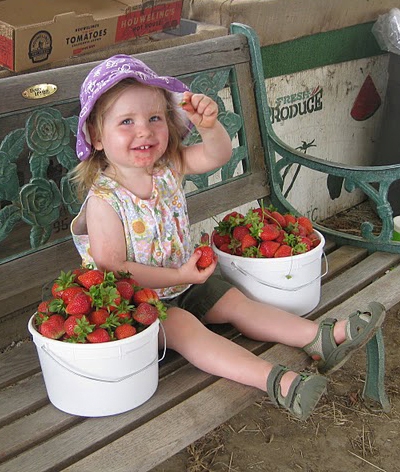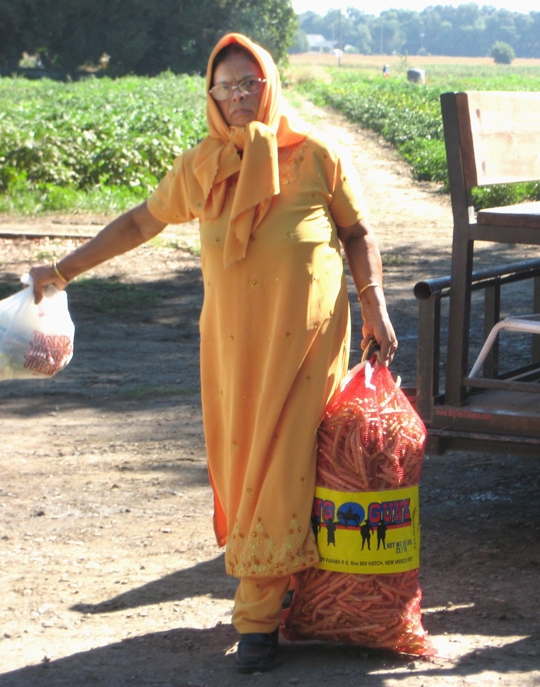Farmers work long hours under the open sky, struggling to finish each day's planting, cultivating, pruning or picking before the sun sets. It's hard sometimes to imagine, while engaged in this day-to-day pressure, but city people often welcome the chance to pay for an hour or two on that farm, especially if they can pick their own fresh fruit or vegetables. For many urban people, just getting out of town to a farm is a delicious pleasure.

U-Pick farming has a long tradition. Fifty years ago it was common for families to spend an afternoon picking bushels of produce to take home for canning or drying or storing for use in the winter. As more women joined the workforce full-time, the practice of preserving food became less common and U-Pick farms shifted their focus.
Visiting a farm became an enjoyable family experience, designed to build lasting memories, often with an underlying goal for farm visitors of teaching children where their food comes from. With the current popularity of local food and culinary adventures, U-Pick farming operations are growing in popularity and attracting new customers.

However, U-Pick farming comes with risks. Customers need welcoming and caring for, and they tend to break branches, wander where they are asked not to, and not show up when the weather is bad, even if the crops are ripe and ready. Farmers considering a U-Pick operation need to understand their liability and food safety responsibilities, budget and set prices carefully, and train staff in customer service skills.
UC SAREP staff developed the guide with the help of several California U-Pick farm operators who were willing to share their experience and advice with other farmers. The guide also includes advice provided by farmers and Extension educators from other states. Topics include:
- Crop Diversity and Packaging
- Location and Layout
- Communications and Promotion
- Permitting and regulatory compliance
- Financial Planning and Budgeting
- Staffing considerations
- Food safety & Risk Management
- Pricing
- Complementary products & attractions
After careful consideration, farmers may decide that a U-Pick operation is not for them, or they may decide to move forward with building lifelong connections with a community of grateful customers.
To find a farm to visit (including U-Pick farms) visit the UC Agritourism Directory and Calendar, www.calagtour.org.
For more agritourism resources for farmers, visit the UC SAREP website, or contact Penny Leff, agritourism coordinator, paleff@ucdavis.edu